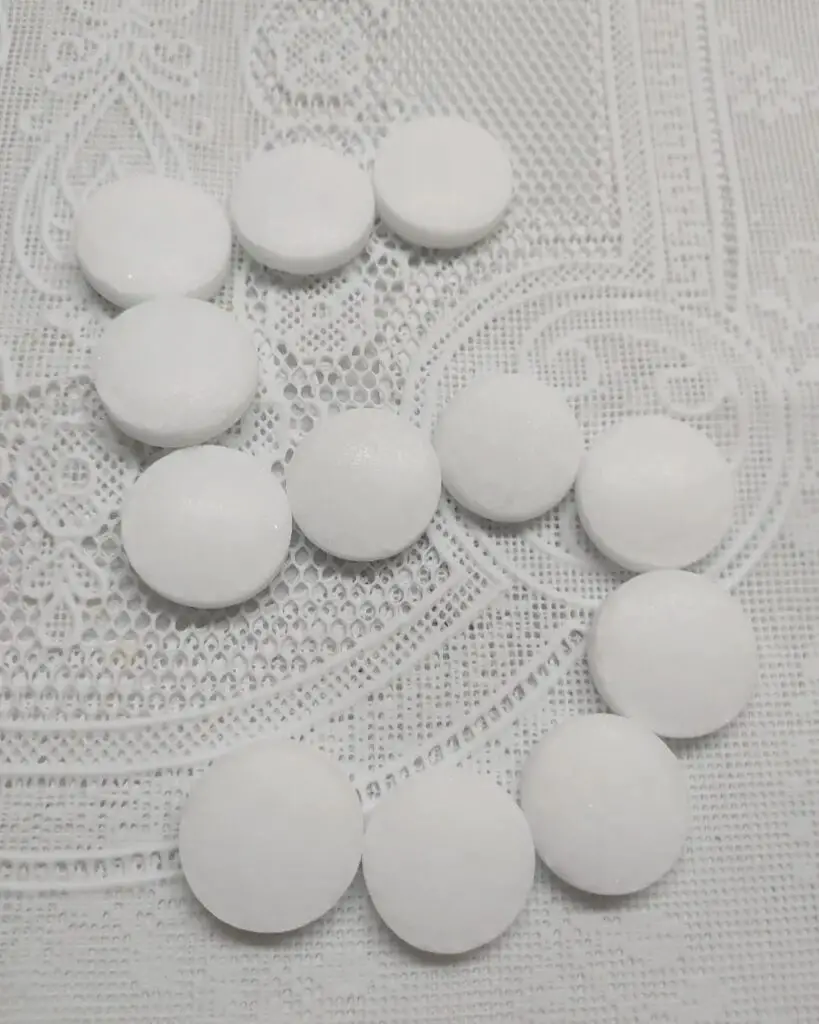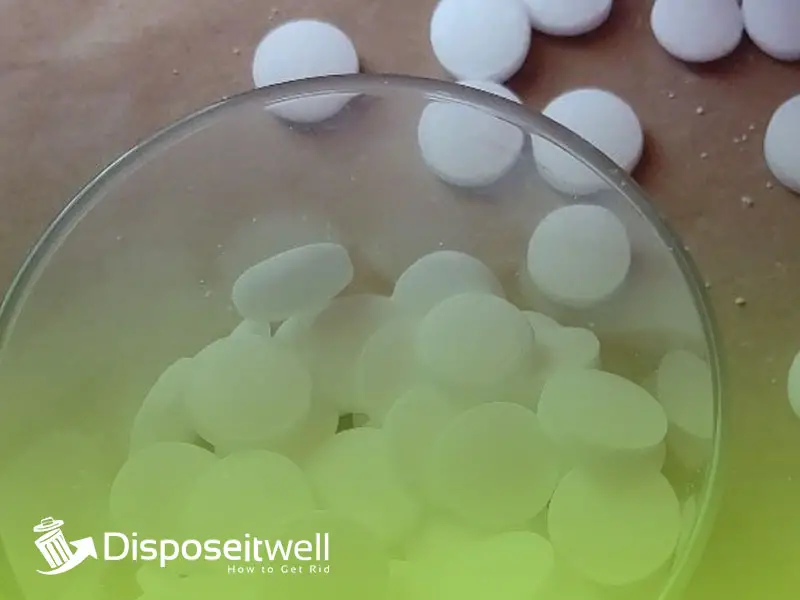Discarding used mothballs can be tricky because it requires specific safety precautions. The first step is determining what kind of mothball you are dealing with: traditional naphthalene or newer paradichlorobenzene varieties.
It’s important never to throw away used mothballs in the trash because they can cause toxic fumes and contaminate landfills.
Instead, the best way to discard them is by placing them inside an airtight container that children or pets cannot breach, then soaking the container overnight in water before disposing of it safely in your household garbage bin.
This article discusses these and other methods of disposing of mothballs and other alternatives for keeping away pests.
Can You Throw Out Moth Balls?
Tossing your unwanted mothballs in the trash can be tempting, but this isn’t safe for you or the environment. Doing so could release harmful chemicals into the air and contaminate other areas where they are dumped.
Instead, there are a few steps you should take when getting rid of your old mothballs.
First, ensure that all containers containing these items are sealed tightly before discarding them. This will prevent any fumes from escaping into the air.
After sealing up each container with lid tape (or something similar), check with local regulations on how best to discard this pest control product. Many towns have specific guidelines on what items must be disposed of at certain facilities or collected by special services.
Some municipalities may offer curbside collection programs which allow residents to place their hazardous wastes directly in designated bins on specified days and times for pick-up from solid waste professionals.
Why Is It Necessary To Dispose of Mothballs Properly?
Mothballs often contain naphthalene or paradichlorobenzene as active ingredients. These substances are toxic and have a strong odor. Once released into the environment, they can contaminate water sources and accumulate in the soil, posing potential health risks such as cancer or liver damage when inhaled or ingested by humans and animals.
Even after disposing of them correctly in garbage bags outdoors, these chemicals will still linger in the air before being broken down by fungi and other microorganisms.
Burying large amounts of mothballs is also not advisable because, eventually, moisture will cause them to dissolve into liquid form before finally entering groundwater supplies, where they become an even bigger risk.
Therefore, we must take extra care when using mothballs around our homes.
How to Dispose of Mothballs?

Mothballs contain chemicals that can be toxic when misused or exposed to the outdoors.
Here are four tips on how to safely dispose of mothballs:
Take The Mothballs Back to Stores
Many stores offer free disposal services as part of their return policy. This will ensure that any remaining toxins will not leach into soil or water sources near your home or business.
Use Local Hazardous Waste Collection Facilities
Contact your local hazardous waste collection facility for instructions on how and where to drop off unneeded mothballs for safe disposal and recycling. Most cities have designated sites specifically set up for this purpose.
Small towns may require residents to travel further away from home to find one with acceptable practices in place.
Hazardous Waste Exchange Programs
Some municipalities allow people who don’t have access (or cannot afford access) to traditional hazardous waste collection sites to participate in “household hazardous waste exchange programs”, which allow citizens to trade products like pesticides or mothballs for safer alternatives safely.
Many household goods, such as paint thinner and motor oil, can also be exchanged during these events.
Use Natural Pest Control Alternatives
Use natural pest repellents instead of chemical-based ones whenever possible. Many plants native insect species detest, including mints (like peppermint), chrysanthemums and lavender, can effectively repel moths while releasing beneficial scents around the house.
Planting a few pots throughout the yard should keep those pesky pests at bay without risking any environmental damage.
Things To Avoid While Disposing Of Mothballs.
When it comes to disposing of mothballs, here are a few important things to consider.
Do Not Bury Mothballs
When you bury mothballs underground, the materials can enter into water systems or seep into the soil, contaminating the environment and leading to health risks for humans and animals alike.
Buried mothballs also release vapors which can attract more bugs instead of getting rid of them.
Avoid Burning Mothballs
Burning mothballs produces toxic fumes that could cause serious health risks if inhaled over some time. Also, burning them will damage your chimney or stove and may even start a fire. To reduce these risks, follow safety protocols when disposing of mothball products properly.
Do Not Flush Down the Toilet or Sink
Flushing mothballs down the toilet or sink drain may seem like an easy solution, but doing so can cause blockages within your plumbing system due to the dense composition of many mothball products.
This could result in costly and potential environmental impacts since flushable items typically contain toxic chemicals that can leach into waterways if not properly disposed of.
Avoid Mixing Them With Other Household Waste
Mothball fumes contain hazardous vapors which can escape and be inhaled by those nearby, making it dangerous for humans and animals. Furthermore, mixing such items causes a reaction between different chemical compounds that may result in unexpected explosions and fires.
How To Store Mothballs?
Mothballs are highly toxic and should always be kept away from children and pets. In addition, they need to be stored in a dry place where other potential hazards or chemicals can’t easily come into contact with them.
Here are some tips on how to store mothballs correctly:
– The container used for storage should be closed tightly when not in use. This will help ensure that no one accidentally gets exposed to the powerful fumes these pest control products give off.
– Store your mothball containers away from children and pets – preferably somewhere high up, such as a cupboard shelf – so that if anyone does get access to them, there won’t be as much risk of accidental ingestion or inhalation of their dangerous vapours.
– Keeping your mothball containers in a cool, dark area will also prolong their effectiveness against moths and pests since heat and light can cause damage over time.
– Label each container clearly, so you don’t forget what product it contains.
Top 8 Alternatives To Mothballs

Mothballs are a popular way to repel moths, but they can also be dangerous and leave behind powerful odors that linger in fabrics. Luckily, several natural alternatives offer just as much protection without the potential side effects of mothballs. Here is a list of 10 alternatives to mothballs worth trying:
1. Cedar chips – Cedar chips have long been used as a natural moth repellent due to their strong odour. Place cedar chips around drawers and closets, put them in sachets to hang from hangers or place them inside dresser drawers directly on clothing items.
2. Lavender – The pleasant smell makes it one of the most effective natural substitutes for mothballs. Make small sachets filled with dried lavender flowers or place sprigs into closets and cupboards for added protection against moths and their larvae.
3. Cloves – Similar to lavender, cloves can create sachets with their strong scent, effectively deterring moths from entering your home.
4. Mint Leaves & Oil – Whether fresh mint leaves are placed between clothes items or essential oil is sprayed onto materials like woollen blankets, using this herb as an alternative will certainly keep away unwanted pests while leaving behind a refreshing scent.
5. Eucalyptus Leaves & Oil – Eucalyptus leaves or oil is another evergreen shrub known for its ability to protect fabrics from pesky critters. You can spray directly onto fabrics or place the leaves within wardrobes.
6 . Rosemary – For those fond of aromatic herbs such as rosemary; why not make use of its pest-deterring property by placing bundles made out of these woody stems within cupboards where it’ll
7. Bay leaves – They work well when left whole, but finely ground bay leaf powder mixed with other herbs such as thyme and rosemary can be more effective at repelling moths from fabrics stored within closets or chest drawers.
8. Diatomaceous earth- It breaks down exoskeletons of various insects, including larvae found deep within carpets & furniture upholstery. Sprinkle some DE powder onto affected areas, wait 24 hours, then vacuum off (or dispose of).
This process needs to be repeated every few days until you notice no longer see signs/symptoms of infest.
Verdict
Mothball use can be a great way to protect your home and belongings from moths. However, it’s important to dispose of unused or expired mothballs properly. Improper disposal may result in environmental contamination and risks to human health.
Following the guidelines outlined in this article – including storing them away from children and pets, using them for their intended purpose only, disposing of any leftovers as hazardous waste, and checking with local authorities can safely manage your mothball use.
Remember that proper disposal is the key to ensuring the safety of yourself and others.
My name is Ella Vicedomine and I’m the founder of this blog. The aim is to start this informational blog to guide people on how to dispose of waste things around in the house but in the right way.

